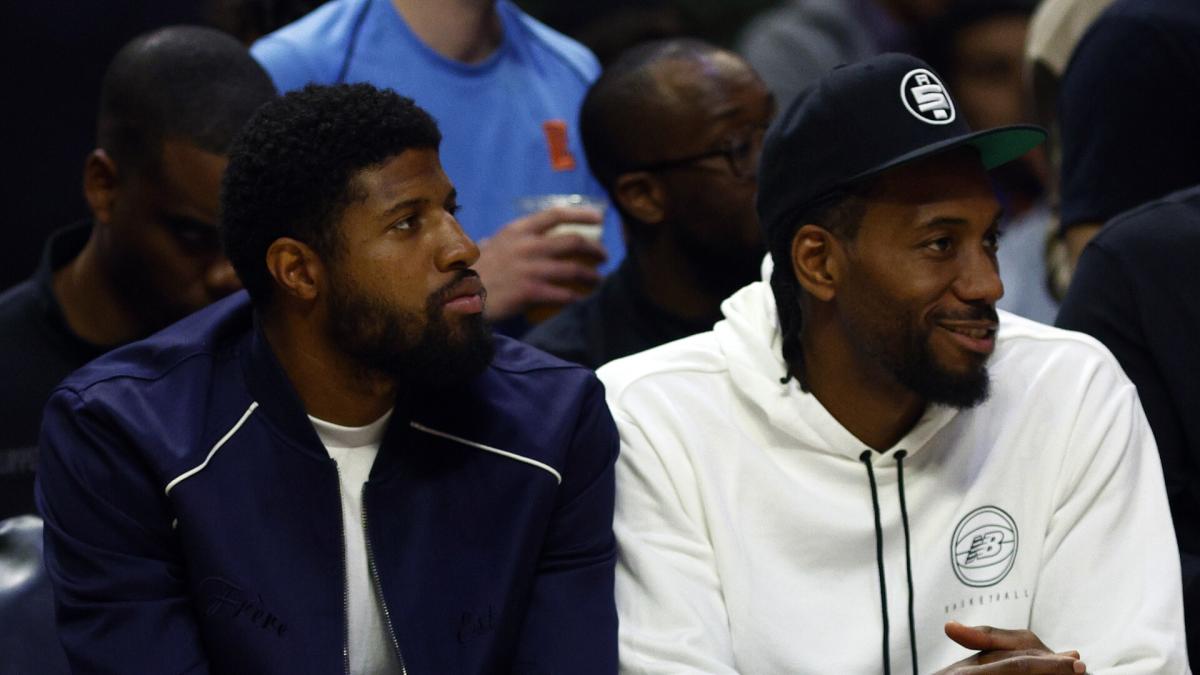
This news isn’t a surprise, the real question is what does it mean?
Wednesday the NBA Board of Governors (made up of team owners) voted to increase fines substantially and take other steps to keep teams from resting multiple star players during nationally televised games, according to multiple reports. It’s not a coincidence that the league is taking this step while negotiating a new national television deal, one of the complaints of broadcast partners is scheduling what should be a star-studded game only to have the big names in street clothes.
The league is talking tough on resting players — it has a new rule that players must play in 65 games to qualify for end-of-season awards such as MVP — but what does it mean on the court? Here is what the new regulations say and breaking down their impact.
• Teams cannot rest more than one star player for the same game. This means the Los Angeles Lakers cannot rest a healthy LeBron James and Anthony Davis on the same night.
• A “star player” is defined as having been an All-Star or All-NBA player in the previous three seasons. This rule impacts 49 players spread across 25 teams, according to ESPN’s Bobby Marks. Where things get weird is how that definition falls — Klay Thompson is not a “star” under this criteria, but Ben Simmons is (2021 All-Star). The league had to come up with standards and this is as good as any, but it will have some odd flaws — for example, Victor Wembanyama is not a star. Gregg Popovich can rest him to his heart’s content.
• Healthy star players cannot sit out a nationally televised game or any of the in-season tournament games. Let’s use the Bucks as an example. They visit the Hornets in an in-season tournament game on Nov. 17 then host the Dallas Mavericks the next night. If the Bucks want to give Giannis Antetokounmpo or Jrue Holiday rest on half of that back-to-back, they have to do it against the Mavericks, the stars can’t be rested for a tournament game.
• Any star player being rested must be at the arena and visible to fans. No hanging out in the hotel room or being sent home on a plane a few days early.
• Teams cannot do a long-term shutdown of a star player. This happens at the end of the season most of the time, when a struggling team sits its star player to protect him and help the team’s lottery odds. Last season, Damian Lillard sat out the final 10 Trail Blazers games, but Portland couldn’t do that this year if he were healthy. The same thing happened with Bradley Beal in Washington. Teams will say that players in this situation are not healthy, but the league can investigate.
• What are the fines for breaking the rules? That’s the big change. The first violation of the new rules is a $100,000 for the team, which jumps to $250,000 for the second violation and $1.25 million for the third. After that, if a team wants to burn money, it will be fined $1 million more than the last fine for each subsequent violation (meaning $2.25 million for a fourth and climbing from there).
• There are exceptions to these rules, and this is where teams will find a way to skirt them. The first is an obvious injury exception — if a player has a sprained knee or fractured finger the league isn’t going to make him play. However, the NBA season is a long and physical grind, and by Christmas every player in the league has enough of a sore back or other wear-and-tear injuries there can be a legitimate medical reason for him to have the night off. The team doctor gets to make the call on whether a player is healthy enough to play, although now the league can review and investigate that claim. If a star player misses a nationally televised or in-season tournament game due to health concerns but bounces back a night or two later, the league will investigate.
Here is where teams get stuck, and let’s use the Clippers as a hypothetical example. If team doctors say Kawhi Leonard is healthy enough to play in a nationally televised game but Leonard says he knows his body and is not, so he is sitting out, the Clippers take the fine. Or, a team could end up with a double-overtime game on the front end of a back-to-back and want to rest their stars the next night — it’s what their sports science tells them to do to avoid a higher risk of injury — the league can fine them because those players are healthy.
One major exception is that players can miss half of a back-to-back if they are over 35 years old on opening night or have played at least 34,000 regular-season minutes, or 1,000 games (regular season and playoffs combined). LeBron James, Chris Paul, Stephen Curry, Kevin Durant and other big stars qualify under this rule. However, the league wants written information the player will be out a week in advance.
There are exceptions for personal issues, other unexpected circumstances, or “end-of-season flexibility.”
• Are the new rules going to change much? Probably not. There is bound to be some discussion around a player sitting out a nationally televised game, and some team likely gets hit with a $100K fine, but it will be a handful of isolated incidents. Teams will figure out how to manipulate the rules and get their guys nights off in the middle of the season and during the run-up to the playoffs. The 65-game award threshold will have a bigger impact (and lead to more discussion).
However, the league gets to sit down at the negotiating table and tell the broadcasters they are working hard to get the biggest stars to play in the biggest games.




